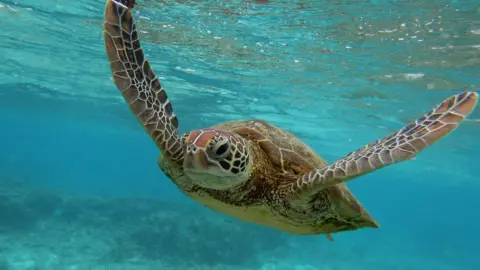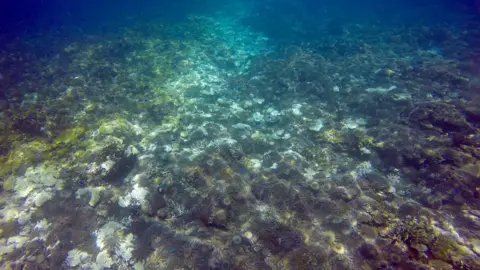Great Barrier Reef: Australia unveils A$60m protection plan
 Getty Images
Getty ImagesThe Australian government has announced a A$60m (£34m; $48m) plan to help improve the health of the Great Barrier Reef.
The reef suffered mass coral bleaching events in 2016 and 2017, which scientists said were a result of warmer ocean temperatures.
It has also endured damage from crown-of-thorns starfish and cyclones.
The new money, to be spent in four ways, will particularly target starfish and soil erosion.
Australian Prime Minister Malcolm Turnbull said there was a "strong link" between the coral-eating species and run-off from water pollution.
"While [the reef] is facing increasing threats, we intend to remain leaders in reef management," he said.
The new measures include spending:
- A$36m on farmers to restore vegetation around reef catchments, offsetting erosion;
- A$10m for an "all-out assault" on crown-of-thorns starfish by increasing culling vessels;
- A$6m on science agencies to develop ways to make coral more "resilient";
- A$4m to employ more field officers to warn about bleaching.
It is part of a commitment by federal and state governments to spend A$2bn on improving the reef over the next decade.
"We want to ensure its future for the benefit of all Australians, particularly those whose livelihood depends on the reef," the government said in a statement on Monday.
However, some environmental groups criticised the package for not focusing more on climate change.
"[This] is the kind of tinkering around the edges approach that has failed in the past and does nothing to address the cause of devastating coral bleaching", Greenpeace said in a statement.
Others reiterated their opposition to a proposed coal mine, which they say would further damage the reef.
But Mr Turnbull dismissed what he called "doomsaying" on the issue, telling reporters on Monday that it was important to "take up this challenge positively".
The reef, located in the Coral Sea off the coast of Queensland, spans an area of 344,400 sq km (133,000 sq mi) and is the largest living structure on Earth.
 GREAT BARRIER REEF MARINE PARK AUTHORITY
GREAT BARRIER REEF MARINE PARK AUTHORITYThe UN says it is the "most biodiverse" of all the World Heritage sites, and of "enormous scientific and intrinsic importance".
